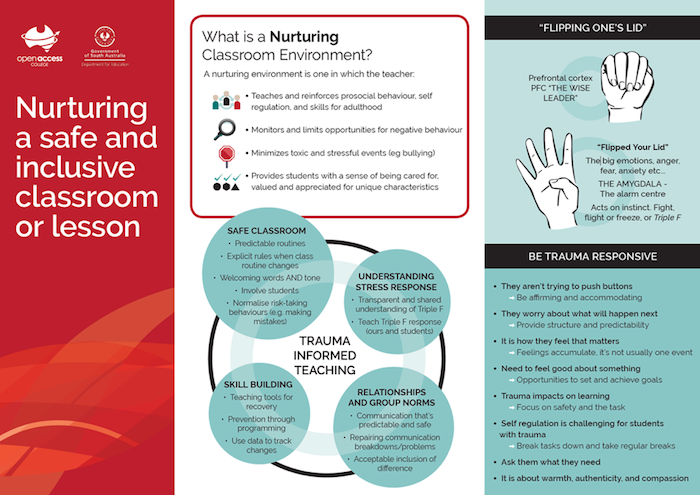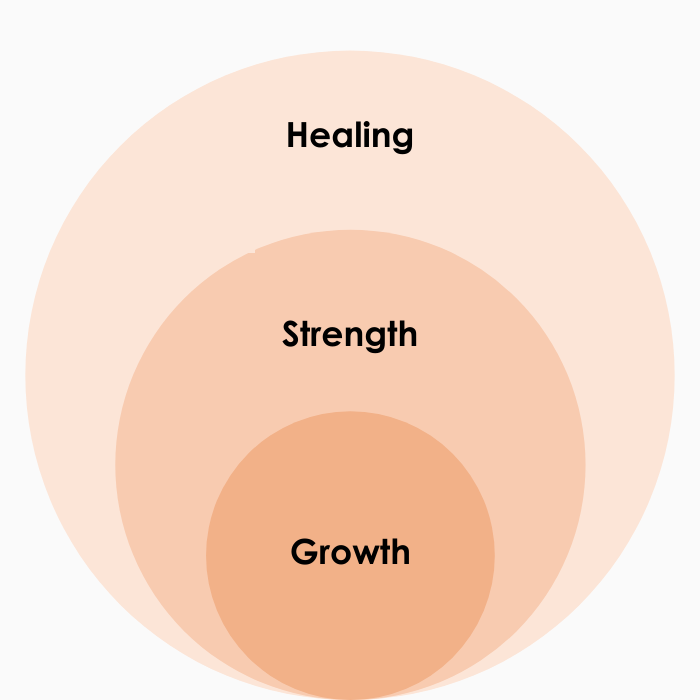Building the capacity of students to engage and then the willingness to learn. Nurturing a safe and inclusive class or lesson where students feel valued, respected and have a sense of belonging.

BERRY STREET EDUCATION MODEL (BSEM) SUMMARISED
Using experience and research BSEM is a pedagogical practice of developmentally informed practices for teachers. The BSEM has been adapted from research and experience into strategies for the classroom or lesson.
We first need to build the capacity to engage and then the willingness to learn.

As teachers we are frequently the only professionals on the front line addressing complex behaviours
Explicit teaching of a growth mindset, character strengths and strategies for resilience and facing adversity.
All students need to know and feel that their time in school matters and their time yields visible growth. They need to see and feel academic growth and successfully navigate the essential elements of life, literacy and numeracy.
BSEM has been designed in 5 developmental domains. Each has strategies, brain breaks and lesson structures.
The 5 domains have been mapped back to the child development capacities that each student must build to be ready to learn and meet the potentially challenging tasks of learning.
Co-regulation is when we deliberately assist another to eventually self-regulate. It describes the process of supporting another person to manage their responses and reactions.
Importantly, co-regulation occurs through the consistency and predictability of routines and the rhythms of daily interactions and lessons. Consistent predictable routine – uncertainty is a threat.
Focus on a developmental approach to understand our bodies to prevent escalation in lessons. Teaching self-regulation is important so that students have control of their bodies (their bodies don’t let them down).
Begin each lesson with an opportunity for students to check-in on their wellbeing and readiness to learn. Make this as spacious as it needs to be; give yourself and the class permission to spend additional time on wellbeing.
Close each lesson with an opportunity for students to reflect on their progress in learning, moments of connection as a group and contributions.
Underpins the model, it is the foundation of connected classrooms where students belong. Research repeatedly identifies student-teacher relationships as a critically important element supporting effective teaching and learning. Relationships become the key determinant of student academic engagement and outcomes. Students work hardest for teachers where they feel connected and valued.
Classroom strategies – unconditional positive regard, redefining power, empathy, golden statements, process vs praise and importantly teacher self-care.
Creating a culture of academic persistence by nurturing resilience, emotional intelligence and a growth mindset.
Emotional intelligence, understanding emotions that are normal in life. Growth mindset and building resilient mindsets so students can bounce back and move ahead.
Strategies for building learning stamina.
Motivating students with strategies that increase their willingness to learn.
Attention is a prerequisite for student classroom or lesson management and is encapsulated in the following questions
Student engagement follows student attention. From the student’s perspective, engagement can be framed as answering the following questions
Responses to these questions will reveal the entry point of struggling students.
True engagement comes in a positively primed classroom or lesson where teachers understand positive emotions as an effective intervention.
Building willingness and motivation for effective goal setting including educational and personal goals.
What’s motivating students to succeed? Nurturing intrinsic motivation and working with signature strengths.
Employing a values and character strengths approach to encourage students’ self-knowledge for future pathways. What values does each student bring? What values does the teacher bring? Are your school values lived authentically?
If we can build from and understand our values we build on wellbeing. What are the values we fall back on during adversity and good times?
Learning about and building on strengths helps to inform as to who they are.
Students need adults to model.
De-escalated students require de-escalated teachers
Resilient students require resilient teachers.
https://www.youtube.com/watch?v=_QCO-19fQ5M&ab_channel=BerryStreet-CentralOffice
https://www.youtube.com/watch?v=Cmb8gJMOtk8&ab_channel=BerryStreet-CentralOffice
https://www.youtube.com/watch?v=l3glxkFbzsM&feature=youtu.be&ab_channel=BerryStreet-CentralOffice
https://www.youtube.com/watch?v=0DBxOrI0y5o&ab_channel=BerryStreet-CentralOffice –
https://www.youtube.com/watch?v=SGaddpXjV80&ab_channel=BerryStreet-CentralOffice
https://www.youtube.com/watch?v=woG7UbF6dO0&ab_channel=BerryStreet-CentralOffice
https://www.youtube.com/watch?v=LyaDw0h09VM&ab_channel=BerryStreet-CentralOffice
https://www.youtube.com/watch?v=1Evwgu369Jw&ab_channel=RSA
https://www.youtube.com/watch?v=R1ZNPKjVdQ4&ab_channel=BerryStreet-CentralOffice
Last updated: 14 October 2024